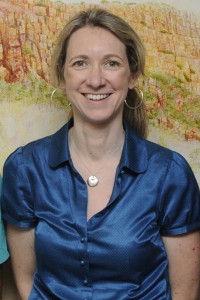 The International Society for Companion Animal Infectious Diseases (ISCAID) is urging practitioners to document infectious diseases using photographic images. The organisation is compiling an online image library to educate veterinary students and practitioners about the presentation, diagnosis and treatment of infectious diseases.
The International Society for Companion Animal Infectious Diseases (ISCAID) is urging practitioners to document infectious diseases using photographic images. The organisation is compiling an online image library to educate veterinary students and practitioners about the presentation, diagnosis and treatment of infectious diseases.
Melbourne University graduate and ISCAID President Professor Jane Sykes returned to Australia recently to address veterinarians at the Centre for Veterinary Education’s feline medicine conference.
After completing a PhD on the diagnosis of upper respiratory disease with Glenn Browning and Virginia Studdert in 1997, Sykes completed a residency in small animal medicine at the University of Minnesota and became board certified in small animal medicine in 2001. She is currently Professor of Small Animal Medicine at the University of California, Davis, and President Elect of the Specialty of Small Animal Medicine of the American College of Veterinary Internal Medicine (ACVIM).
Sykes has a special interest in infectious diseases of companion animals and believes that photographs of cases seen in general practice can be used in the fight against infectious disease.
“At the practice level, images can be used as part of a medical record and can be used to enhance patient care as you can compare before and after, or early and late presentation,” Sykes said.
But such images have a broader application in educating veterinarians worldwide.
“Even with common conditions we see a tremendous variation in clinical presentation. Take dermatophytosis – we’ve all seen it but it has a variable presentation and it is useful for practitioners to see a range of presentations so they can recognise the disease.”
Early recognition may lead to rapid intervention.
“With the increase in number of people using smartphones it is very easy for veterinarians in practice to take photos and we’re accumulating images quickly,” Sykes said.
She believes that many veterinarians are visual learners, and some disease presentations, such as localised tetanus, may be captured in a single picture that is easily recalled for decades.
“I am definitely one of those people,” she said.
“We know that veterinarians go online to look for images, so we want to provide a library of high quality images with accurate, reliable information so that people can be confident the image is what it says it is.”
ISCAID is seeking images of anything pertaining to infectious disease including gross lesions, cytology, histopathology, images of organisms growing on culture and even electron microscopy images. Images should be stored in JPEG format with minimal compression. They can be emailed to jesykes@ucdavis.edu
ANNE FAWCETT

